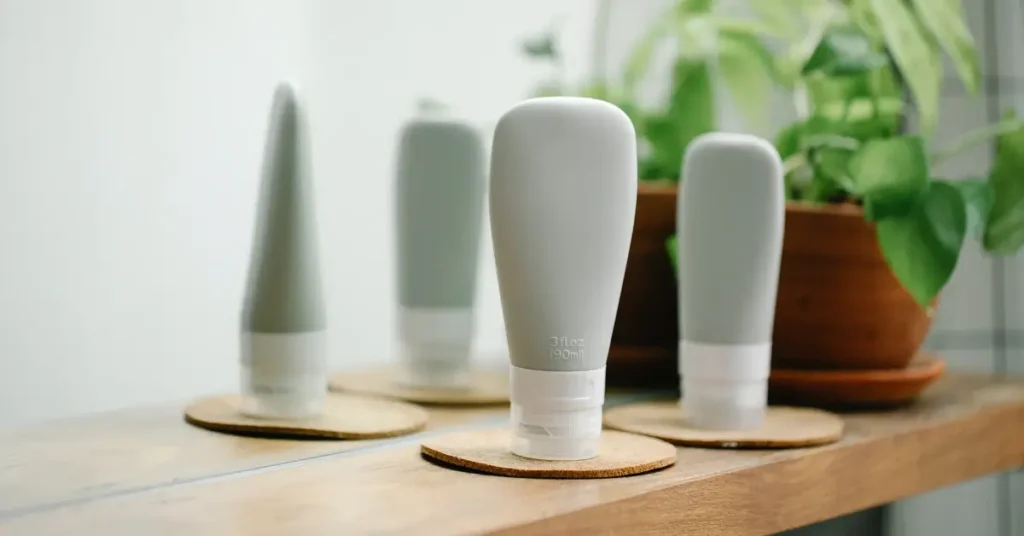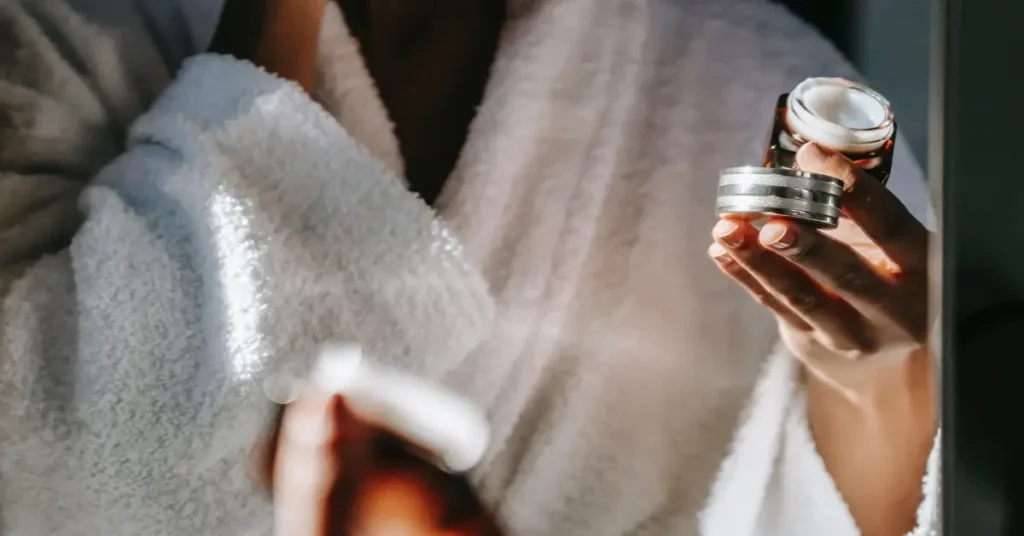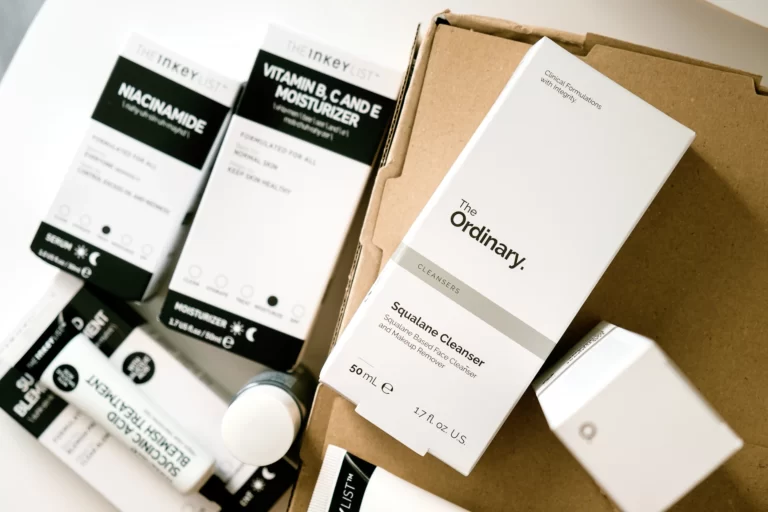Are you asking yourself, “Is it okay to combine snail mucin with niacinamide?” Fear not, the response is a resounding yes! However, let’s take a closer look to discover the reality and put to rest any hesitations you may have.
Say goodbye to skincare confusion and hello to a radiant, revitalized complexion. Together, we’ll navigate the world of snail mucin and niacinamide, ensuring you harness their extraordinary benefits effectively.
Don’t miss out on the skincare breakthrough of the year! Keep reading to unravel the secret to youthful, glowing skin with the powerhouse duo of snail mucin and niacinamide. Embrace this transformative journey and witness the radiant results for yourself!
Table of Contents
Can I Use Snail Mucin With Niacinamide?
Using snail mucin and niacinamide together can help improve the overall appearance of your skin. Snail mucin is known for its hydrating and plumping properties, while niacinamide can help reduce inflammation and improve the appearance of fine lines and wrinkles. However, it’s important to understand the potential risks associated with using them together.
When it comes to layering these two ingredients, there is no one answer that works for everyone. It depends on your individual skin concerns and what you are hoping to achieve by using either snail mucin or niacinamide.
In this article, we will explore the benefits and risks of using snail mucin and niacinamide together, as well as provide tips on how to properly layer these two ingredients for glowing results.
Understanding Snail Mucin
As a skincare enthusiast, I’ve heard a lot of buzz about snail mucin and its benefits. At first, the thought of putting snail slime on my face was a little off-putting, but after doing some research, I decided to give it a try. Here’s what I learned about snail mucin and its potential benefits and side effects.
Benefits of Snail Mucin

Snail mucin is a natural product that’s rich in hyaluronic acid and glycosaminoglycans. These compounds are known for their hydrating and plumping properties, which can help to improve the appearance of fine lines and wrinkles. Snail mucin also contains allantoin, which is a soothing and anti-inflammatory ingredient that can help to calm irritated skin.
In my personal experience, using snail mucin has helped to improve the overall texture and hydration of my skin. I’ve noticed that my skin feels more supple and plump, and my fine lines and wrinkles are less noticeable. Additionally, I’ve found that snail mucin has a calming effect on my skin, which is especially helpful when I’m dealing with redness or irritation.
Potential Side Effects of Snail Mucin
While snail mucin is generally considered safe for most people, there are some potential side effects to be aware of. For example, some people may experience an allergic reaction to snail mucin, which can cause redness, itching, or swelling. Additionally, snail mucin is a potent ingredient, so it’s important to use it in moderation and to patch test before applying it all over your face.
Overall, I’ve found that snail mucin is a great addition to my skincare routine. It’s a natural, hydrating ingredient that can help to improve the appearance of fine lines and wrinkles, while also soothing and calming the skin. If you’re considering using snail mucin in your own skincare routine, be sure to patch test first and use it in moderation to avoid any potential side effects.
Exploring Niacinamide
As someone who has struggled with acne and uneven skin tone, I am always on the lookout for new skincare ingredients that can help improve my complexion. One ingredient that has caught my attention is niacinamide. But before I start using it, I want to explore the advantages and possible drawbacks of this ingredient.
Advantages of Niacinamide
Niacinamide, also known as vitamin B3, is a water-soluble vitamin that has been shown to have multiple benefits for the skin.
- Reduces inflammation: Niacinamide has been shown to reduce inflammation in the skin, which can help improve the appearance of redness and acne.
- Improves skin texture: Niacinamide can help improve the texture of the skin by increasing collagen production, which can lead to firmer, more youthful-looking skin.
- Reduces hyperpigmentation: Niacinamide can help reduce the appearance of dark spots and hyperpigmentation by inhibiting the transfer of melanin to the skin’s surface.
Possible Drawbacks of Niacinamide

While niacinamide has many benefits, there are a few possible drawbacks to consider:
- Can cause irritation: Some people may experience irritation when using niacinamide. It’s important to start with a low concentration and gradually increase over time.
- Can interact with other ingredients: Niacinamide can interact with certain ingredients, such as vitamin C and retinol, so it’s important to do your research before combining products.
Combining Snail Mucin and Niacinamide
Are you wondering: “Can I use snail mucin with niacinamide?” The answer is yes! These two ingredients can work together to help improve the overall appearance of your skin. In this section, I will discuss how to use them together, precautions when mixing, and tips for choosing the right snail mucin and niacinamide products based on your skin type and concerns.
How to Use Them Together

When it comes to using snail mucin and niacinamide together, it’s important to use them in the right order. According to the BEAUTIOUS, it is recommended to use niacinamide first on damp skin, and once it is completely absorbed, you can apply snail mucin. This will ensure that both ingredients are able to penetrate your skin and work effectively.
Step-by-Step Guide
Here’s a step-by-step guide on how to combine snail mucin and niacinamide:
- Cleanse your face with a gentle cleanser.
- Apply niacinamide to damp skin and allow it to absorb completely.
- Apply snail mucin to your face and neck.
- Follow up with your favorite moisturizer.
Snail mucin, niacinamide, and zinc saved my skin and I don’t go a single day without them
— · 𓆝.° 。˚𓆛˚。 °.𓆞 · (@linaejocelynn) January 27, 2021
Precautions When Mixing
While snail mucin and niacinamide can be used together, there are some precautions you should take. According to the BEAUTIOUS, you should avoid mixing snail mucin with Vitamin C, as it can cause redness and irritation. Additionally, it’s best to use niacinamide and snail mucin separately if you have sensitive skin.
Choosing the Right Products
When choosing snail mucin and niacinamide products, it’s important to consider your skin type and concerns. If you have oily skin, you may want to look for a lightweight snail mucin product that won’t clog your pores. If you have dry skin, you may want to look for a snail mucin product that contains hydrating ingredients like hyaluronic acid.
For niacinamide products, look for a concentration of around 5%. This is the optimal concentration for improving the appearance of fine lines, wrinkles, and uneven skin tone. Additionally, look for niacinamide products that are formulated with other beneficial ingredients like antioxidants and hyaluronic acid.
Snail Mucin with Niacinamide: Key Takeaways

If you’re asking yourself “Can I use snail mucin with niacinamide?”, the answer is yes! Both ingredients can provide powerful anti-aging and anti-inflammatory benefits when used together.
Here are some key takeaways to keep in mind:
- Snail mucin is known for its hydrating and healing properties, while niacinamide can help reduce inflammation and improve skin texture.
- When used together, these two ingredients can help improve the overall appearance of your skin.
- It’s important to patch-test any new products before applying them to your face to avoid any potential allergic reactions.
- Some people prefer to use niacinamide before snail mucin, while others find that applying snail mucin first works better for them.
- Snail mucin products can be used alongside other active ingredients, including topical antioxidants, retinol, and peptides.
Personally, I’ve found that using snail mucin with niacinamide has helped improve the texture and hydration of my skin. I like to apply niacinamide first and let it absorb for a few minutes before applying snail mucin.
Overall, if you’re looking for a way to improve your skin’s appearance and texture, using snail mucin with niacinamide is definitely worth considering. Just be sure to patch-test any new products and find a routine that works best for your individual skin concerns.
FAQ

Does snail mucin go after niacinamide?
Yes, snail mucin typically goes after niacinamide in your skincare routine. Niacinamide is water-soluble and is best applied before thicker, more viscous products like snail mucin, which is usually in the form of a serum or essence.
What is snail mucin compatible with?
Snail mucin is compatible with a wide range of skincare products and ingredients. It can be used with hydrating serums, moisturizers, oils, and other active ingredients like hyaluronic acid, glycerin, peptides, and niacinamide. Its soothing and moisturizing properties complement various skincare routines.
Who should avoid snail mucin?
Individuals with known allergies to snail products or those who have experienced allergic reactions to snail mucin in the past should avoid using snail mucin-based skincare products. Patch testing is recommended for those with sensitive skin to ensure compatibility.
What are the side effects of snail mucin?
Side effects of snail mucin are rare but may include allergic reactions in those with allergies to shellfish or snail products. Some individuals might experience skin irritation or redness. It’s essential to patch test before using snail mucin products, especially for those with sensitive skin.
How long does it take for snail mucin to work?
Snail mucin is known for its soothing properties, and many users report experiencing calmer and less irritated skin within 2 to 3 days of using products containing snail mucin. Its ability to provide quick hydration and soothing effects makes it popular for addressing skin irritations.
If you liked this blog article about the question: “Can I Use Snail Mucin With Niacinamide in 2023?”, don’t forget to leave us a comment down below to tell us about your experience.





